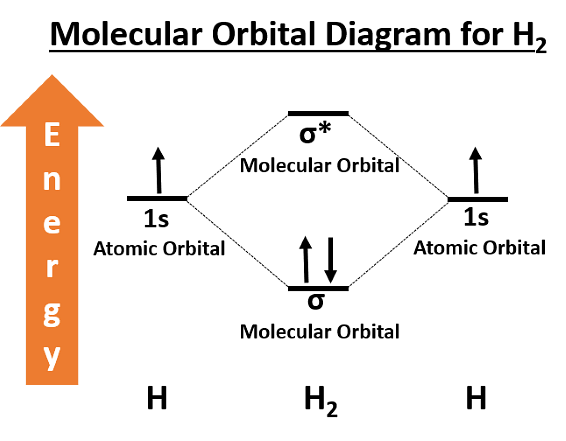The overlapping of orbitals in benzene is of the type
- $sp-sp$
- $p-p$
- $sp^2 -sp^2$
- $sp^3 -sp^3$
The Correct Option is C
Solution and Explanation
Top Questions on Molecular Orbital Theory
- In the following, the number of paramagnetic molecules are: O\(_2\), N\(_2\), F\(_2\), B\(_2\), Cl\(_2\).
- JEE Main - 2025
- Chemistry
- Molecular Orbital Theory
Which of the following statement is true with respect to H\(_2\)O, NH\(_3\) and CH\(_4\)?
(A) The central atoms of all the molecules are sp\(^3\) hybridized.
(B) The H–O–H, H–N–H and H–C–H angles in the above molecules are 104.5°, 107.5° and 109.5° respectively.
(C) The increasing order of dipole moment is CH\(_4\)<NH\(_3\)<H\(_2\)O.
(D) Both H\(_2\)O and NH\(_3\) are Lewis acids and CH\(_4\) is a Lewis base.
(E) A solution of NH\(_3\) in H\(_2\)O is basic. In this solution NH\(_3\) and H\(_2\)O act as Lowry-Bronsted acid and base respectively.
- JEE Main - 2025
- Chemistry
- Molecular Orbital Theory
Which of the following linear combinations of atomic orbitals will lead to the formation of molecular orbitals in homonuclear diatomic molecules (internuclear axis in z-direction)?
(1) \( 2p_z \) and \( 2p_x \)
(2) \( 2s \) and \( 2p_x \)
(3) \( 3d_{xy} \) and \( 3d_{x^2-y^2} \)
(4) \( 2s \) and \( 2p_z \)
(5) \( 2p_z \) and \( 3d_{x^2-y^2} \)
- JEE Main - 2025
- Chemistry
- Molecular Orbital Theory
- Arrange the following in increasing order of bond order: (A) He\(_2^+\)
(B) O\(_2^-\)
(C) HF
(D) NO\(^-\)- CUET (PG) - 2025
- Chemistry
- Molecular Orbital Theory
- The sum of the bond orders of O$_2^+$, O$_2^-$, O$_2$, O$_2^{2-$, and the sum of the unpaired electrons in them respectively are
- AP EAPCET - 2025
- Chemistry
- Molecular Orbital Theory
Questions Asked in KCET exam
- The minimum value of \( 1 - \sin x \) is:
- KCET - 2025
- Inverse Trigonometric Functions
Match List-I with List-II and select the correct option:

- KCET - 2025
- Bond Parameters
- The maximum value of \( z = 3x + 4y \), subject to the constraints \( x + y \leq 40, x + 2y \geq 60 \) and \( x, y \geq 0 \) is:
- KCET - 2025
- Linear Programming Problem
- Given, a current carrying wire of non-uniform cross-section, which of the following is constant throughout the length of the wire?
- KCET - 2025
- Current electricity
- If the number of terms in the binomial expansion of \((2x + 3)^n\) is 22, then the value of \(n\) is:
- KCET - 2025
- Binomial theorem
Concepts Used:
Molecular Orbital Theory
The Molecular Orbital Theory is a more sophisticated model of chemical bonding where new molecular orbitals are generated using a mathematical process called Linear Combination of Atomic Orbitals (LCAO).
Molecular Orbital theory is a chemical bonding theory that states that individual atoms combine together to form molecular orbitals. Due to this arrangement in MOT Theory, electrons associated with different nuclei can be found in different atomic orbitals. In molecular orbital theory, the electrons present in a molecule are not assigned to individual chemical bonds between the atoms. Rather, they are treated as moving under the influence of the atomic nuclei in the entire molecule.
